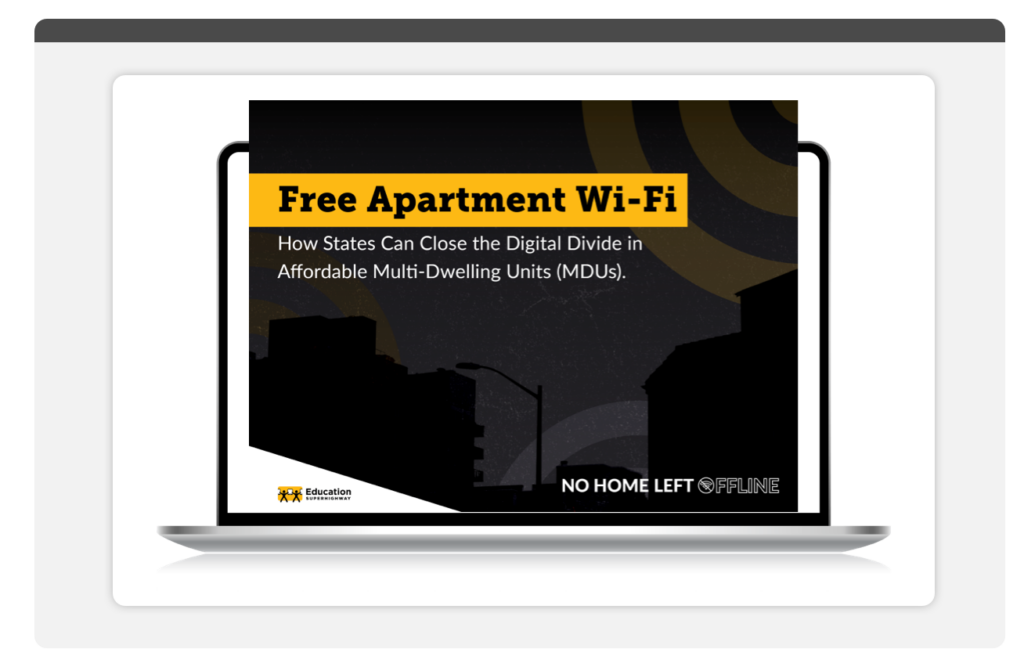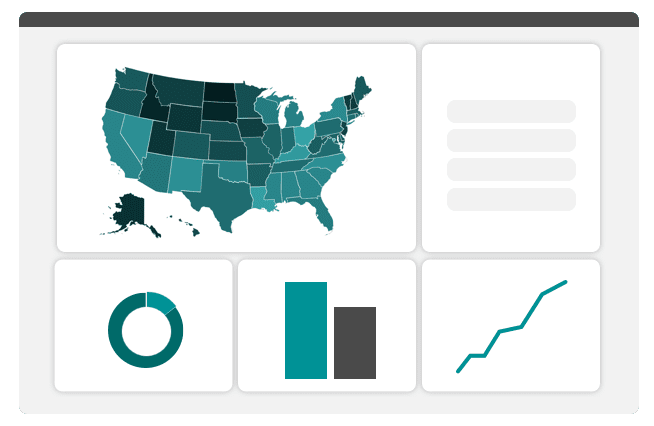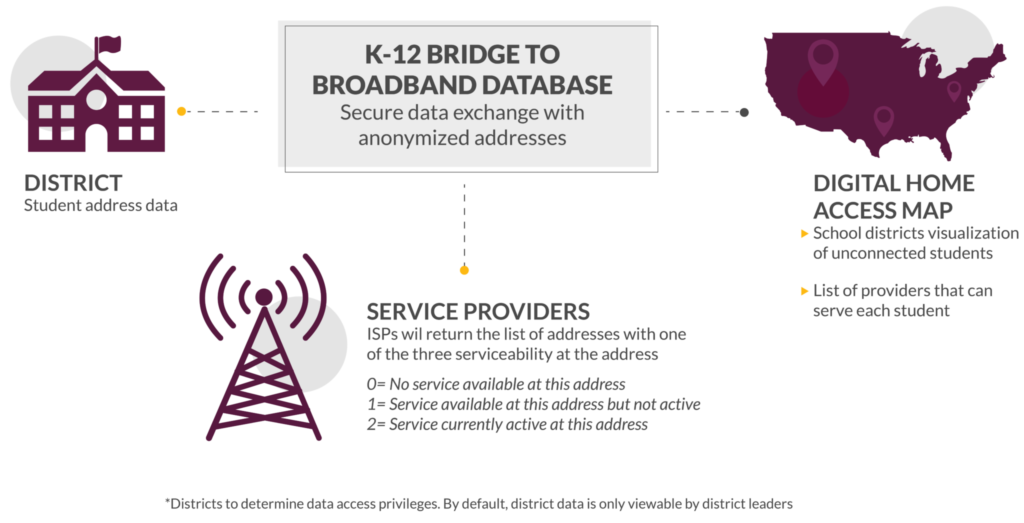Sponsored service is when a procurement lead acts as a single-payer and handles the payment of Internet bills to ensure connectivity remains continuous for students. This model emerged during the shutdown of schools due to the COVID-19 pandemic, when school districts began partnering directly with broadband providers to ensure students could access remote learning.
This type of agreement can occur after a school district determines which families lack Internet, or when a school district partners with providers in their area to initiate a data exchange in order to understand which families lack Internet.
Every sponsored service offering may have their own requirements (for example, a minimum contract length or a minimum number of users), so a diligent vetting of contract agreements and service terms is always recommended.
Some sponsored service offerings have specific eligibility criteria, the most common criteria being that families be eligible for at least one public assistance program, such as the National School Lunch Program, housing assistance, Medicaid, SNAP, or SSI.





